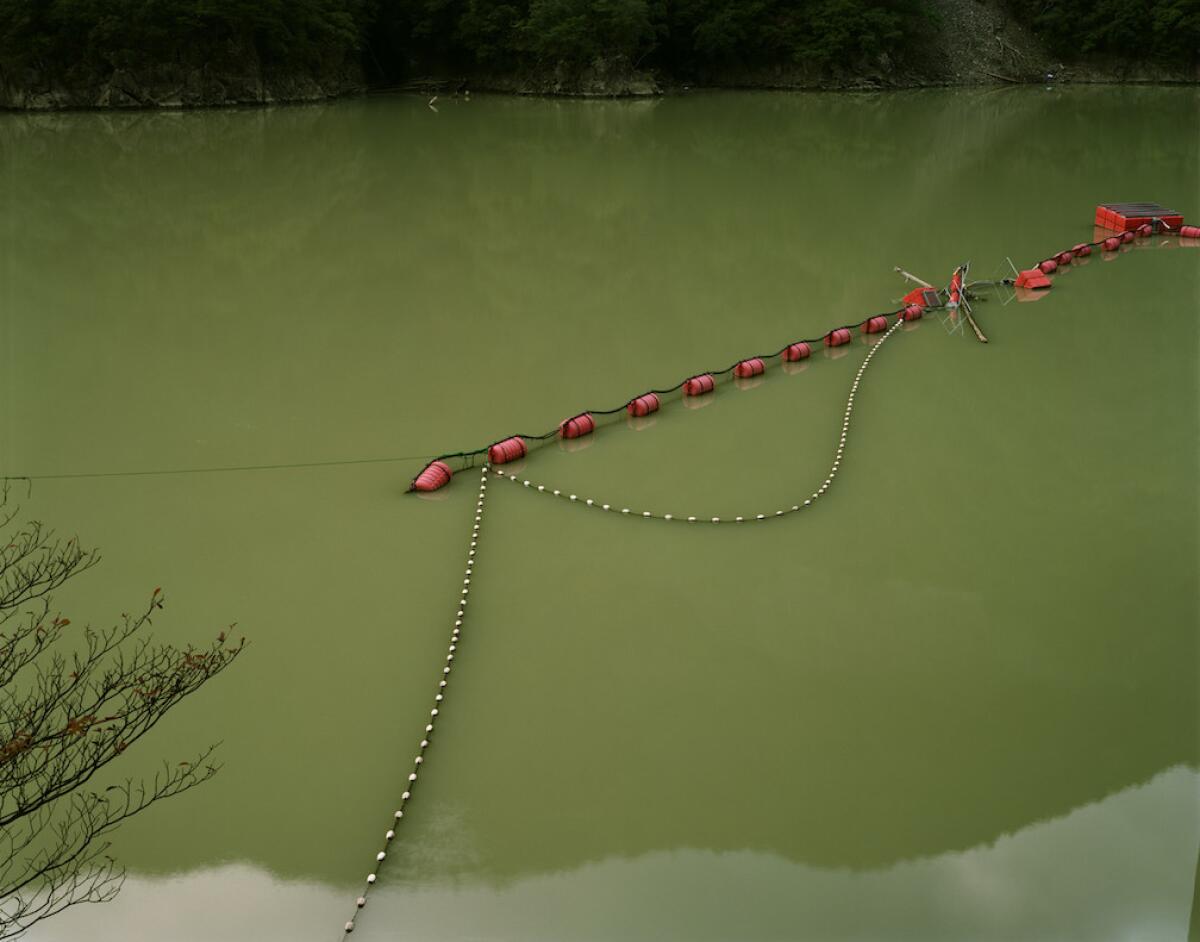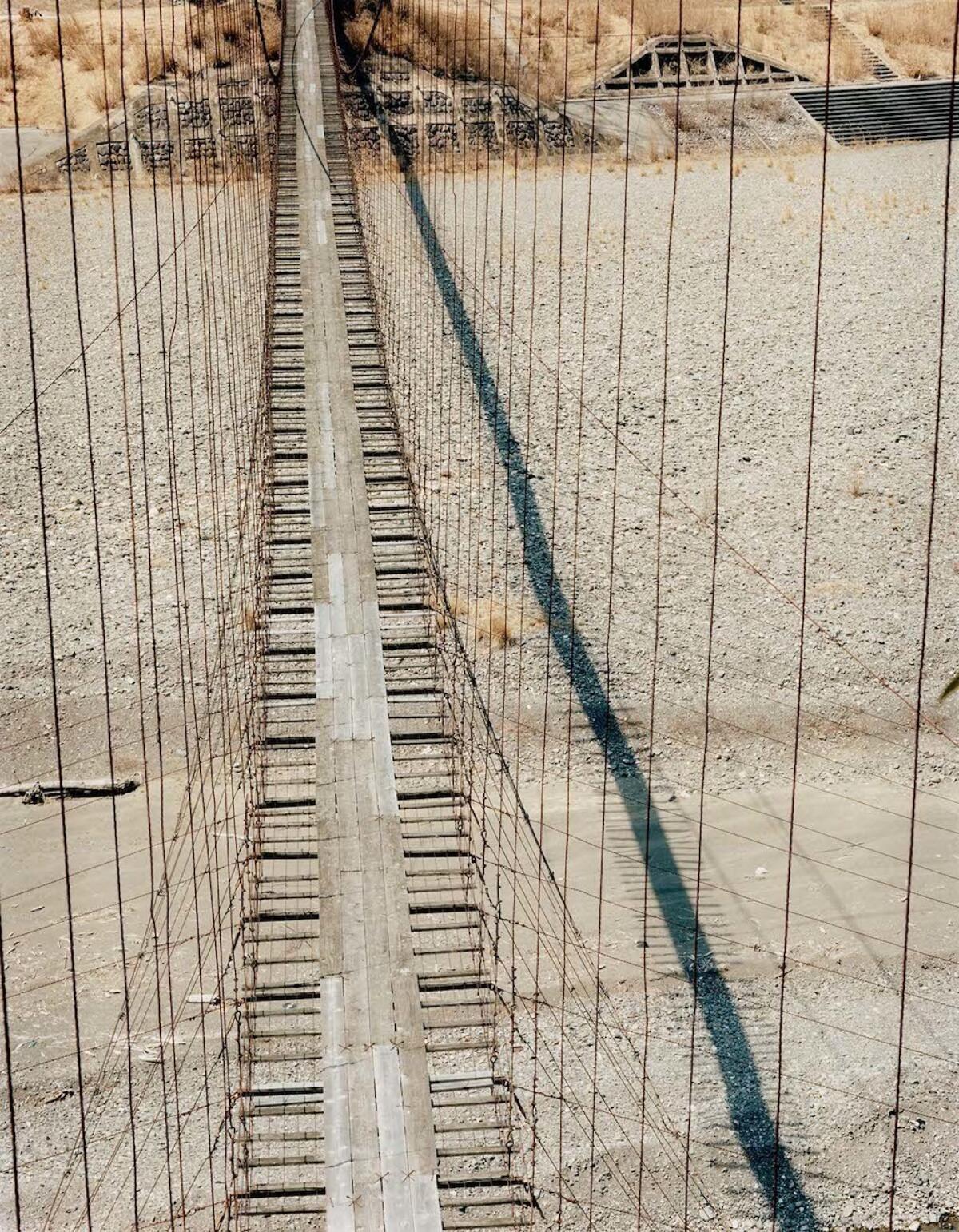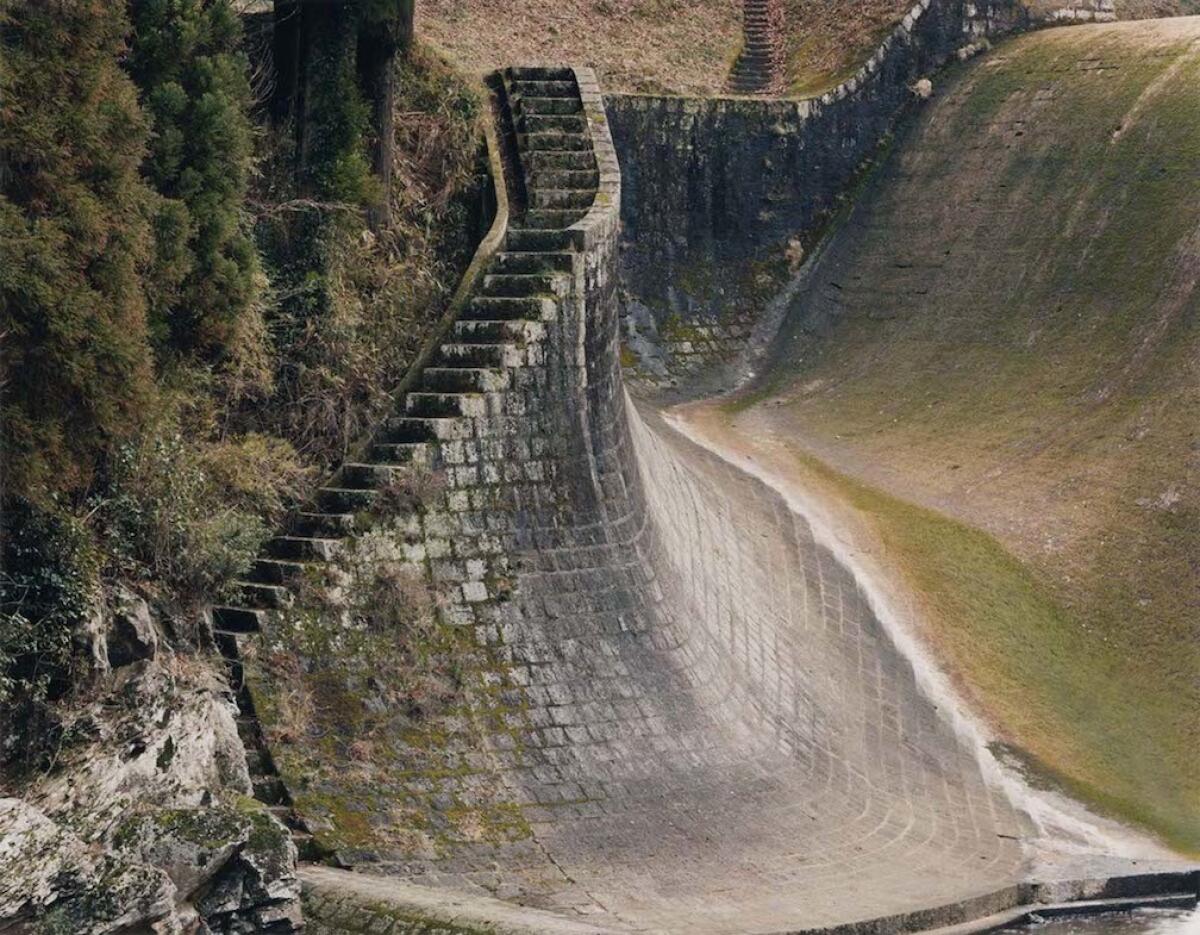Review: Toshio Shibata’s glorious photos find mystery where man meets land
Toshio Shibata occupies a distinct place in landscape photography: His pictures don't idealize pristine wilderness nor do they moralize about the damaging imprint humans leave upon the natural world. Shibata studies places of contact — where we have altered the earth — and finds reflection, wonder, awe.
Beauty, in his work, is inclusive, and purity is a matter of compositional elegance rather than rarefied subject matter.
"Japanscapes" at Gallery Luisotti showcases Shibata's work in color, mostly from the last few years. Large, immersive images and 4-by-5-inch contact prints alike crystallize the photographer's remarkable visual intelligence. Every scene is a marriage of touched and untouched landscape, of geometric precision and organic irregularity, of the engineered and the elemental.
Shibata distills each view to its formal essence, eliminating the horizon and accentuating pattern. Red buoys read as a chain of dots on a still, green plane of water.

The narrow wooden platform of a suspension bridge, seemingly under construction, stretches from top to bottom like a zipper, its shadow a long, skinny spinal column on the dry gully beneath.

SIGN UP for the free Essential Arts & Culture newsletter »
Texture is an active element, and allusions to elastic skin and gridded weaves abound. In "Takeda City, Oita Pref.," for instance, the curved stone wall of an old dam reads as a sensuously twisting body — one slope, bleached dry, giving way to another, moss-moistened.
This glorious show also includes several black and white photographs from Shibata's "53 Stations" series of the mid-'80s. In his contemporized take on Hiroshige's 1832 woodblock-print chronicle of the journey between Kyoto and Edo (Tokyo), traditional post stops are replaced by today's stark, generic service stations. However site-specific, Shibata's nighttime views hint at an underlying sense of dislocation.
In one image, the gleaming display windows of vending machines float within utter darkness in a steady, percussive rhythm across the page. Our created world, Shibata reminds us again and again, is no less mysterious than the given one.
Gallery Luisotti, Bergamot Station, 2525 Michigan Ave., Santa Monica. Through Jan. 20; closed Sundays and Mondays. (310) 453-0043, www.galleryluisotti.com

See all of our latest arts news and reviews at latimes.com/arts.
MORE ART:
Machine Project is closing its doors
Contested art and artifacts from Japanese American internment camps go on view
What's next for the Getty's Pacific Standard Time? This critic has an idea
The biggest entertainment stories
Get our big stories about Hollywood, film, television, music, arts, culture and more right in your inbox as soon as they publish.
You may occasionally receive promotional content from the Los Angeles Times.



